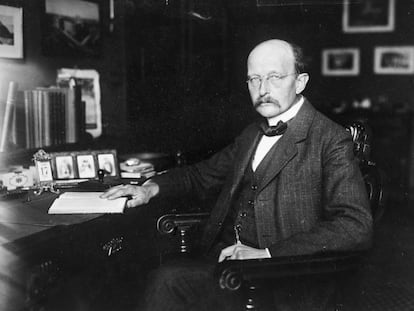Do our bones have music?

Strictly opinion pieces that reflect the author's own style. These opinion pieces must be based on verified data and be respectful of individuals, even if their actions are criticized. All opinion columns by individuals outside the EL PAÍS editorial team will include, after the last line, a byline—no matter how well-known—indicating the author's position, title, political affiliation (if applicable), or main occupation, or any that is or was related to the topic addressed.

Clint Eastwood successfully adapted Mystic River (Salamandra), the novel in which Dennis Lehane presents a story of underdogs in the purest American style. It's a fiction where reality hits home without concessions. That's what Dennis Lehane possesses, who handles scenes with a mastery that can only be learned by experiencing them firsthand.
In one of them, blood splatters on a man's clothes, prompting his wife to recall a chapter in her life , from when she was younger and had a foolish fall on a broken bottle and pierced the arteries in her hand with a piece of glass. It was the closest thing to "the typical tingling in your elbow when you hit a music bone."
Just as the term "anatomical snuffbox" replaced " radial fossa "—the term "musical bone" replaced "ulnar nerve." Because sometimes scientific names take a backseat, being overshadowed by popular names, and this is one of those times. The fact is that the "musical bone" doesn't refer to a bone, but rather to a nerve in the arm. And if that weren't enough, this nerve will also be known as the "funny bone."
For those who don't know , this nerve is one of the main ones in the arm; the other two are the radial and median nerves. But it's on the inside of the elbow, right under the bone called the medial epicondyle, where the tingling sensation that travels to the fingers every time we bump ourselves is located. This is due to the pressure exerted on the ulnar nerve, and honestly, it's not a bit funny.
There are several hypotheses regarding the name. One is a bit far-fetched and points to the humerus , the arm bone at the end of which is the aforementioned medial epicondyle. Due to its phonetic relationship with the word " humorous ," it leads us to the name "funny bone." The truth is, such a possibility seems too artificial . For this reason, the "music bone" seems more appropriate, since music is a vibration that generates a sound wave, and blows that press on the ulnar nerve also cause a vibration, a tingling sensation that travels to the hand.
However, if there is a musical bone in our anatomy, that bone is located between our foot and the knee and it is the tibia , whose etymology takes us back to its Latin origin and which refers to the oboe-like wind musical instrument that we know as the aulos, with a penetrating and shrill sound, used in the festivals of Ancient Greece.
This relationship between music and bones goes all the way back to the USSR in the 1960s, when rock was banned and music was clandestinely recorded on recycled X-rays. Although the acetate sheets didn't have the same fidelity as vinyl records, it was the only way to move the pelvis to the rhythm of rock 'n' roll . Undoubtedly, the bones achieved their music thanks to the rhetorical figure achieved by the X-ray.
Do you want to add another user to your subscription?
If you continue reading on this device, it will not be possible to read it on the other device.
ArrowIf you want to share your account, upgrade to Premium, so you can add another user. Each user will log in with their own email address, allowing you to personalize your experience with EL PAÍS.
Do you have a business subscription? Click here to purchase more accounts.
If you don't know who's using your account, we recommend changing your password here.
If you decide to continue sharing your account, this message will be displayed indefinitely on your device and the device of the other person using your account, affecting your reading experience. You can view the terms and conditions of the digital subscription here.

Journalist and writer. His notable novels include "Champagne Thirst," "Black Powder," and "Mermaid Flesh."
EL PAÍS







